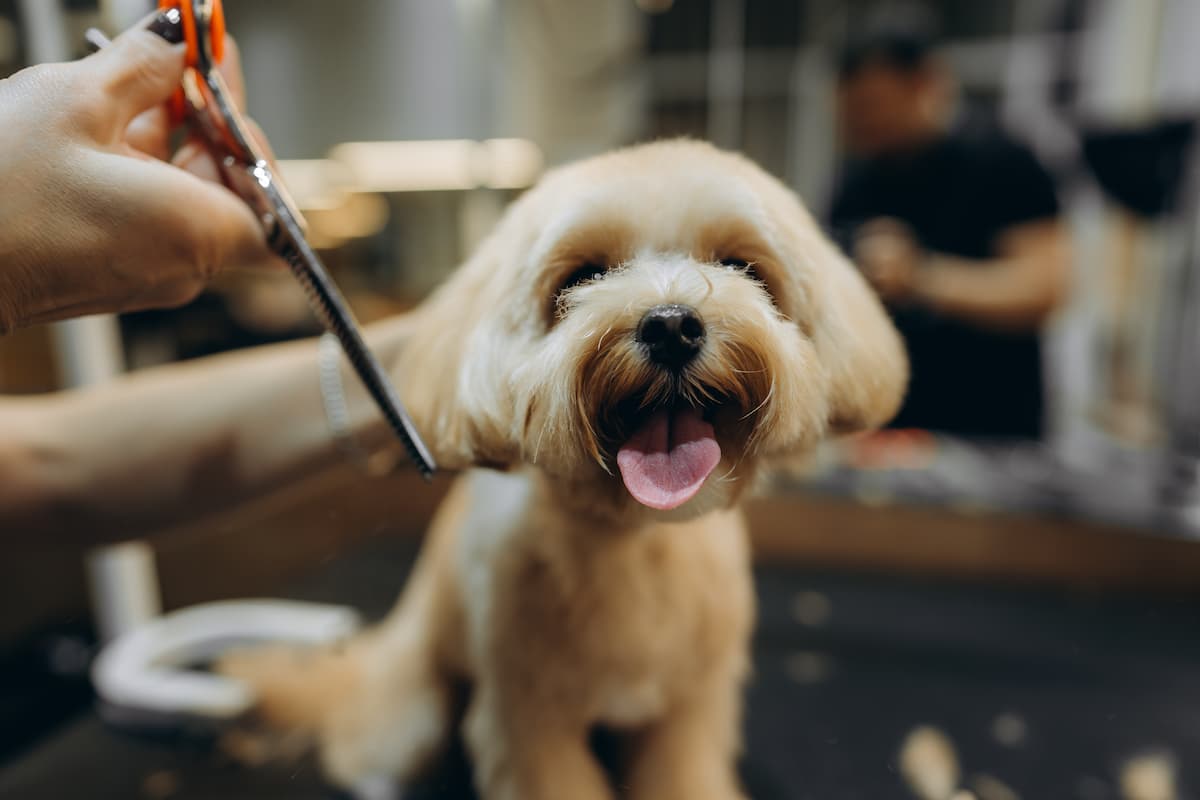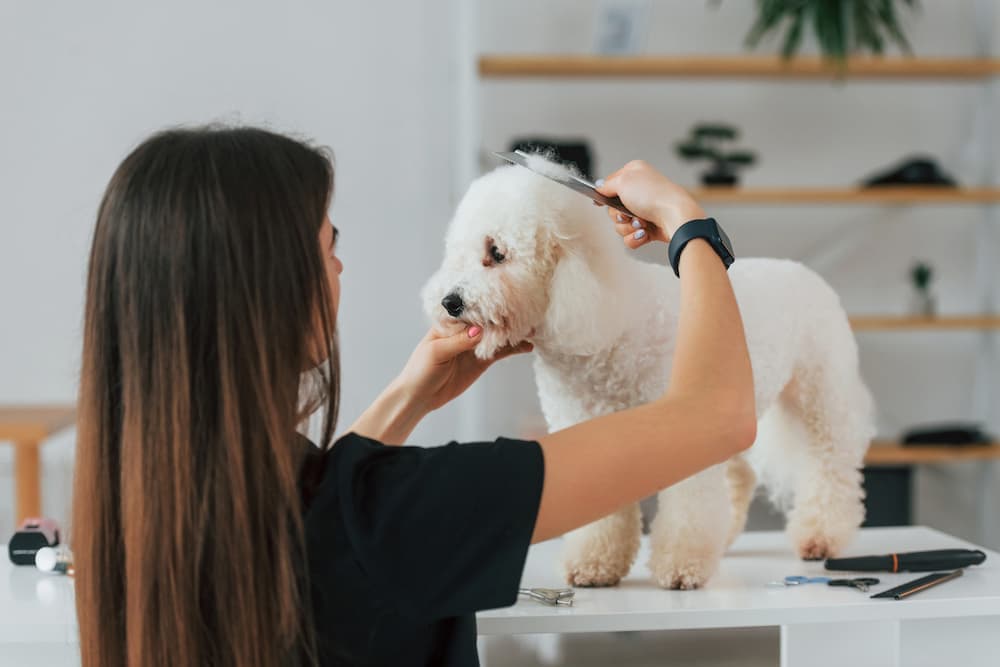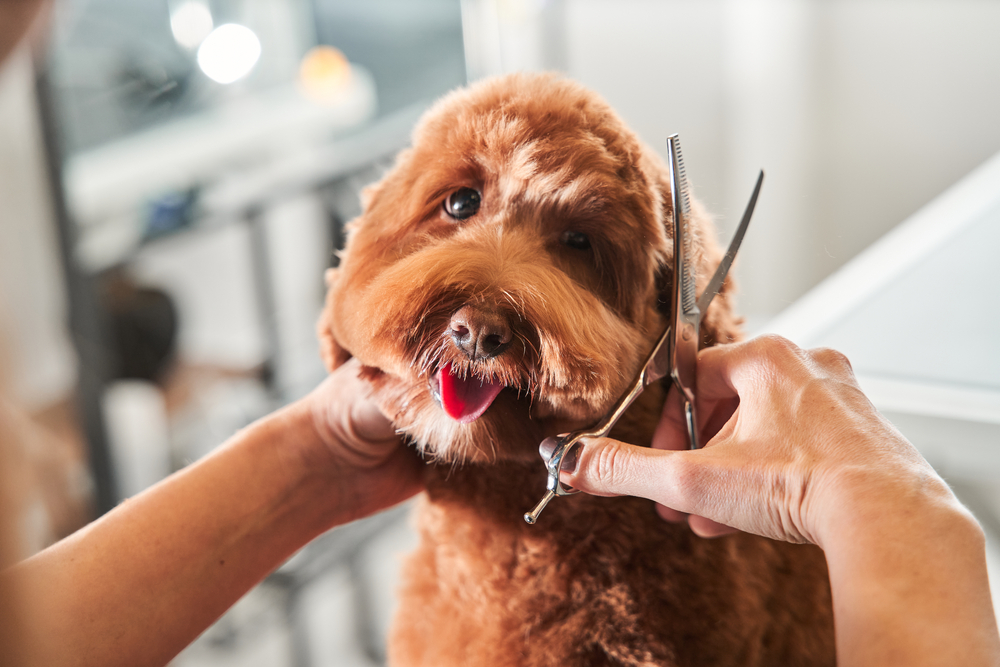Why do dogs need grooming? It’s certainly not a question you would expect our earliest dog-domesticating ancestors to ask. The dogs of their day were, well, wolves. And their coats were just fine on their own without fancy brushes, baths, and regular cuts. Can you even imagine lathering up a wolf with fresh-smelling doggy shampoo? You might not make it out with all your fingers!
So, what happened over the last few thousand years to change that? In other words, why are our modern canines such doggy divas about coat care?
In this article, we’ll talk about how humans changed the course of hairstyle history, and of course, what that means for Dog Owners today!
 Why do dogs need grooming? Because the King said so!
Why do dogs need grooming? Because the King said so!
Dogs have been lauded as status symbols in Europe for well over a thousand years. Hungarian Vizslas, for instance, were often given as gifts of high honour between kingdoms. In Ireland, legend has it that Ailbé, the Irish Wolfhound, was so treasured that an argument over his ownership started a war! And by the time that Henry III of France came to power, no one batted an eye at the fact that he carried his three Bichons in a basket around his neck.
Of course, European rulers weren’t the only ones with impressive-looking puppers. Chow Chows were once owned exclusively by the wealthiest families in China. Their guarding duties were secondary to their primary purpose of intimidating visitors with their beauty and power (and price tag!).
Not only were these highly prized dogs given the best food and the cosiest kennels, but they also enjoyed the pampering of dedicated pet groomers. Whether they were sitting alongside the throne, repairing diplomatic ties abroad, or intimidating enemies, these royal doggos had to look their best.
Not all dogs were living in the lap of luxury
The vast majority of dogs throughout history did not receive the royal treatment. Instead, they were bred to perform certain jobs for their Owners. Some were personal protection dogs, others bred to hunt vermin. Sheep herding and livestock guarding was about as common as hunting and scent tracking. And because dogs were bred to fit such a wide range of job descriptions, they also needed the right uniforms to do their jobs well.
The Komondor, for example, has a naturally wooly white coat that allows them to blend in perfectly with a flock of sheep—quite clever for a dog tasked with guarding the pack from wolves and other predators! The Poodle sports a coat specially designed for their former role as waterfowl hunters. That sculpted curly do was essential for providing them with buoyancy and warmth in the cold rivers of the German countryside.
Other dogs were bred to have a coat as low-maintenance as possible. The Australian Cattle Dog is one such pup; their Owners were much too busy tending to the herd than grooming their doggos.
Everywhere you look in the dog world, you’ll find that coat type and grooming needs hold secrets about a breed’s working background!
Why do dogs need grooming today?
In the modern world, a Schnauzer no longer needs an impressive beard to protect them from the rats they once hunted. And a Papillon doesn’t need to be looking their best for an appearance at Versaille. But grooming is still a common practice for our household hounds. And there are a few different reasons for that.
The first one is simply practical. Humans have always loved doggos. But, nowadays, we’ve taken it to a whole new level. We welcome our puppers into our homes, our cars, our offices, and even our beds! So it’s really no surprise that we want them to be clean, even if they’d rather be caked in mud their whole lives. Plus, regular grooming goes a long way towards reducing the amount of shedding that ends up on our furniture and clothes….well, for those of us who don’t own super shedders, that is!
Grooming is also a way to keep our doggos happy and healthy. Regular brushing can prevent uncomfortable or painful matting and tangles, while also giving us a chance to spot and remove parasites. It also helps to distribute our dogs’ natural oils and shake out loose dead skin and hair follicles. Other grooming tasks, such as ear cleaning and tooth brushing, are absolutely vital to canine health.
The last reason we groom our dogs today is for aesthetic purposes. We pouf up the Poodle pompadours, comb out the silky Saluki ears, and sculpt the Fox Terrier beard as an homage to the work that breeds have done for us for generations. Whether they’re conforming to breed standards in a dog show or simply strutting their stuff around the neighbourhood, we humans just love a throwback.

Inspired to help your pup to look their best? Here are a few grooming tips to get you started:
- Learn more about your dog’s breed. If you’re looking to conform to your dog’s breed standard or want to know the best way to keep their coat healthy, learning more about their unique coat type will help. Fellow hound Owners, for instance, tend to have a range of tips for reducing the oily hound smell. Wire-haired pooch Owners may be able to offer advice about hand stripping. And if you’ve got a mix, the quality of their coat may just reveal who their ancestors are!
- Make grooming fun (or at least tolerable!). All dogs need at least some grooming, even if it’s just the occasional bath or nail trimming. You can make the process much easier if you start early and teach your pup to associate grooming with something good. For instance, you might give them their favourite treats or a special dog toy that only comes out when the clippers do. And, it’s usually a good idea to schedule your grooming sessions when they’re the most relaxed, like after a long walk or play session.
- Feed your dog a high quality diet. Foods that are filled with natural fats like Omega-3s are a great way to boost your dog’s coat health. Consider switching your pup to an all-natural raw dog food so that they can enjoy a softer, shinier, and stronger coat.
Need some grooming products & tools?
Pet Chemist have a range of dog brushes, shampoo & conditioners, detangling sprays, nail clippers and so much more! Simply visit their website to order your dog grooming supplies online and have them conveniently shipped to your door.
Find a groomer you can trust.
Pet groomers have been around for hundreds of years, so why not leave it up to the pros?
Browse and find a Mad Paws Dog Groomer near you – take a look at their reviews, reach out and ask a few questions, then book for your fur baby in for a trim & style!

